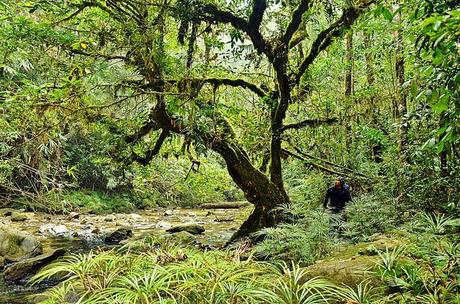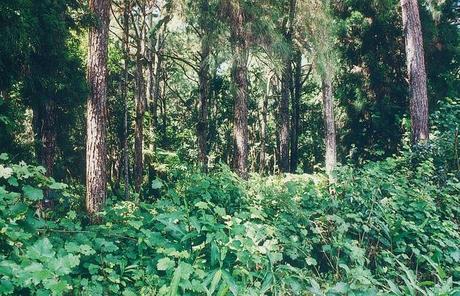The rainforest has a variety of different types of plants, many of which cannot be found anywhere else in the world. The tropical rainforests are usually found in the Central and South American regions, and their plants are split up into four different types. While the rainforests cover only about 8 percent of the actual earth, they are home to more than half of the plants and animals that live on the earth.
The most prevalent type of plant that is found in the tropical rainforest is the tree. Trees make up nearly two thirds of the rainforest plants that grow in the Amazon, based on research that has been conducted by the Rainforest Conservation Fund. There are larger trees, like the big leaf majogany, and it is actually 200 feet tall and can live to be 350 years old. It is deep in a reddish color, and it is used to make a lot of different types of furniture. You will also find Brazil nut trees, which drop huge fruits around the beginning of each year. Their fruits are really large, and they can be produced only in Brazil.

Protecting these habitats is very important. You may be surprised to find that some of the plants that are found in the rainforest are really similar to some of the plants that you may have in your home town. In fact, most of the plants are just certain types of plants that are in the same family as other plants that are not dependent on the rainforest to thrive. Take a closer look.
Plant Adaptations
Buttress Roots
The roots of Buttress Roots suffers from leaching and poor quality of nutrients. This is the reason that they grow laterally rather than vertically in search of nutrients and thus form a dense network on the surface of the ground. Since the roots are long and wide, the trees get larger area for water intake. The buttress roots therefore help trees to maintain stability when they reach towering heights and also during thunderstorms.
Bromeliads
Next, take a closer look at bromeliads. There are over 2500 different types of species of bromeliads that exist in the tropical rainforest. One of the most popular is the pineapple. Most of the bromeliads that are oufnd are actually found in the stiff leaves that can overlap in the top of the rainforest, that help to hold in all of the rain and keep it in the environment. Most of these plants produce colorful flowers, including red, orange, blue and purple flowers.
Drip Tips
The leaves of plants have adapted to cope with exceptionally high rainfall and make use of their elongated tips to shed off the water as soon it drops on them. This is needed to protect them from fungal and bacteria growth which is common in a wet and damp environment and to keep their surface clean.
Epiphytes
Then, you will find epiphytes. This type of plant is actually the type that doesn’t really ever touch soil. They are mainly found on the trees, and they get all of their nutrients from the trees. They include the orchids and ferns that are found in the upper canopy of the rainforest. They rely on insects and certain types of birds to pollinate and spread. Most of the orchids that grow in the rainforest will start out really tiny, and then they can grow to be as tall as about 14 feet, sometimes even more! Since they don’t use a root system, they have to get their nutrients from the fungi that grow at their roots. This is also how they get their water.

Bark
A thick bark helps to limit moisture evaporation from the tree’s trunk. Since this is not a concern in the high humidity of tropical rainforests, most trees have a thin, smooth bark. The smoothness of the bark may also make it difficult for other plants to grow on their surface.
Lianas
Finally, you will find lianas in the rainforest. These are much like vines, and make up just about 8 percent of the total plant life in the tropical rainforest. These woody plants actually get their sunlight through various different techniques. They have roots, tendrils, hooks, thorns and twigs that can be used to climb up the trees in the rainforest so that they can get the sunlight that they need in order to thrive. They work to help stabilize the trees of the rainforest as well. One of the most common types is the rattan vine, and it is collected from the rainforests in Southeast Asia to help make furniture. It has been used so much that it is now an endangered plant, meaning that you can’t really find it that much anymore.
Prop and Stilt Root
Prop and Stilt Roots can grow as long as 28 inches a month. Prop and stilt roots help give support and are characteristic of tropical palms growing in shallow, wet soils.
When we preserve the rainforests, we can actually keep these plants thriving. It is something to consider, especially when you take into consideration the fact that much of the rainforests in the world are actually be cut down faster than you would like to realize. You may not even know, but we lose miles and miles of rainforests each and every day. This is really not a good situation for the many plants that depend on the rainforest to live.

